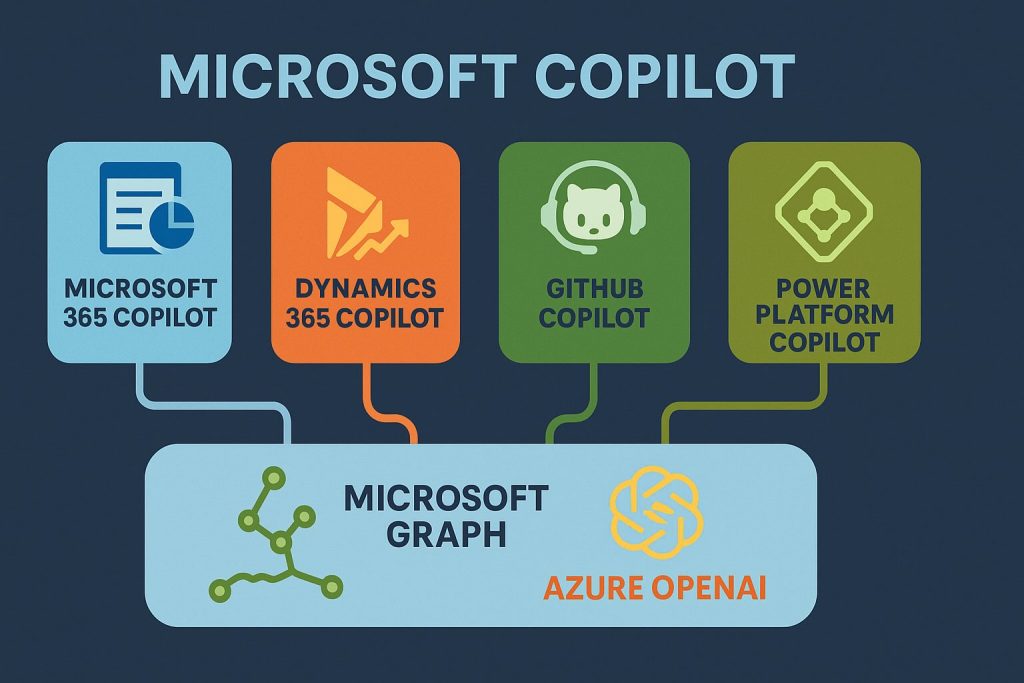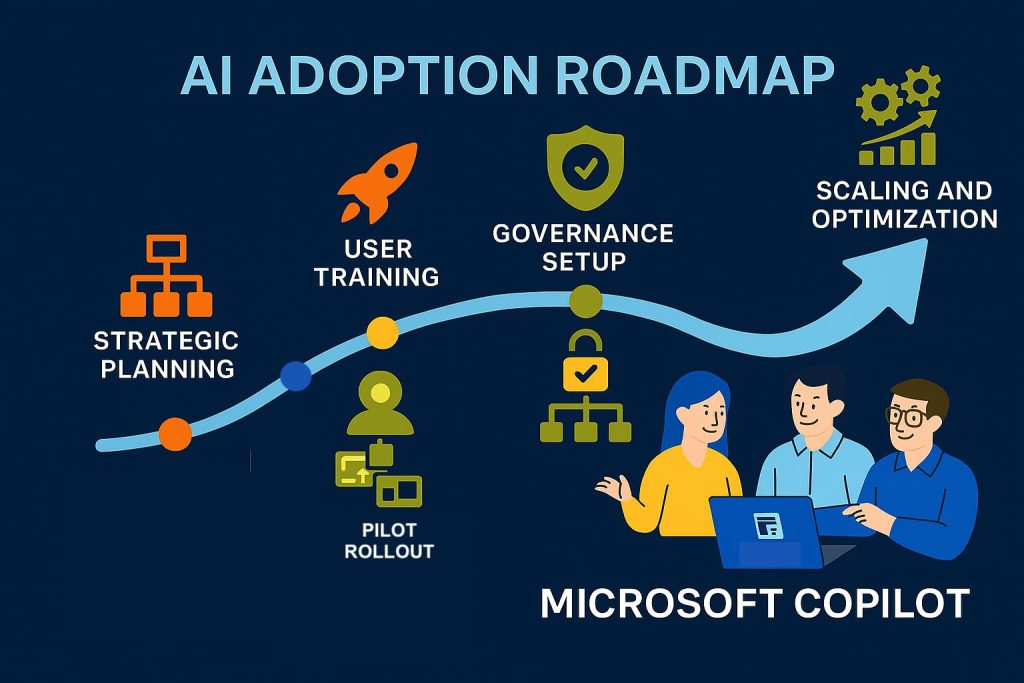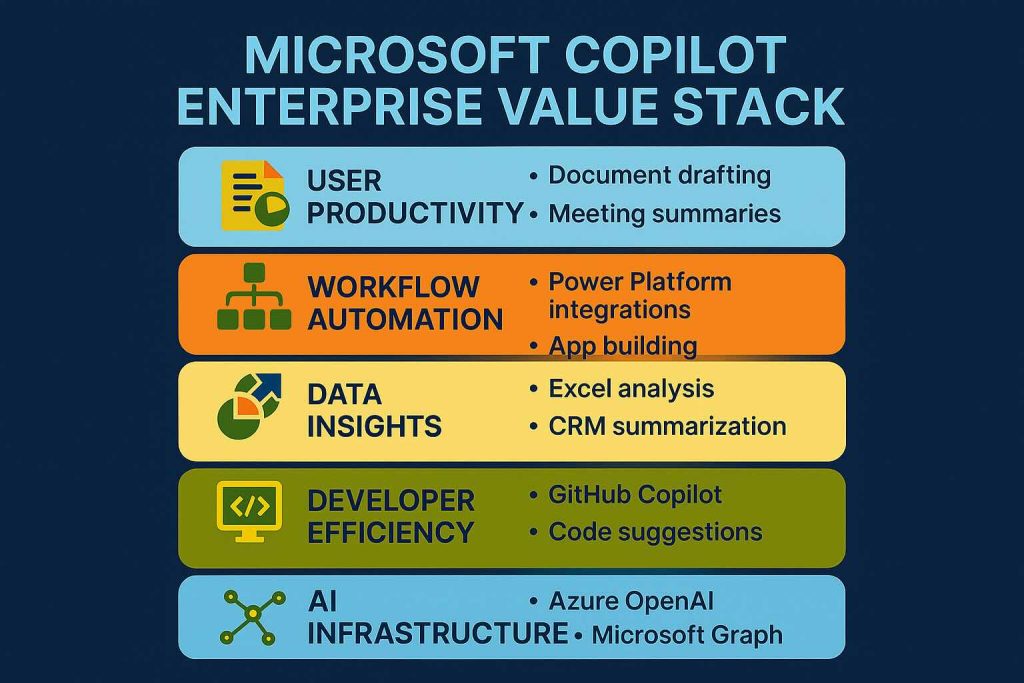
The acceleration of generative AI into business workflows has forced a rapid reevaluation of how enterprises structure digital work, manage knowledge, and equip their workforce. Microsoft Copilot, in its many implementations across the Microsoft ecosystem, is not merely an AI chatbot embedded in office tools. It is a redefinition of how people access, create, and act on information at scale. For those of us guiding AI adoption inside large organizations, Microsoft Copilot presents both a tremendous opportunity and a profound responsibility.
Having worked across industries to help organizations integrate AI and digital tools responsibly, I see Microsoft Copilot as a pivotal shift in how technology can augment rather than simply automate knowledge work. The goal is no longer just productivity. It is clarity, speed of insight, and contextual execution. However, realizing that vision requires more than technical deployment. It demands digital transformation strategies that are tightly aligned with business objectives and digital adoption programs that support users within the context of their actual workflows. Without those foundational elements, the promise of Copilot remains theoretical and its potential largely untapped.
This guide is written for professionals and leaders who are expected to not just understand Microsoft Copilot, but to operationalize it. We will examine the underlying architecture, compare it with adjacent technologies such as ChatGPT, explore business use cases, evaluate Microsoft Copilot Studio for custom solutions, and discuss the essential elements of enterprise training, governance, and transformation.

Microsoft Copilot is not a singular product but an integrated platform layer that augments several Microsoft products with large language model capabilities. Whether embedded in Word, Excel, Outlook, Dynamics 365, Power Apps, or GitHub, Microsoft Copilot leverages the user’s context through the Microsoft Graph to generate intelligent responses, automate tasks, and guide decision-making. The underlying language models are primarily built on Azure OpenAI services, such as GPT-4. These models are enhanced with Microsoft-specific capabilities that support enterprise security, compliance, and contextual grounding.
The foundational architecture combines several components:
What makes Microsoft Copilot more than just an AI assistant is its capacity to operate within your organization’s trusted data environment. Outputs are not trained on your data, nor do they persist beyond the user session. This makes Copilot suitable for regulated industries and enterprise-grade deployments in a way that consumer-grade AI tools are not.
One of the most important conversations I have with clients early in their AI adoption journey is how Microsoft Copilot compares to ChatGPT. This is not a minor distinction. Understanding the difference determines whether your organization deploys a secure, enterprise-aligned solution or exposes itself to shadow AI practices that jeopardize data integrity and governance.
From a technical standpoint, both Microsoft Copilot and ChatGPT leverage similar foundational models. GPT-4 powers both, but the deployment environment, data access, and security architecture differ entirely.
From a strategic perspective:
In organizations that aim for enterprise-scale adoption, the smart strategy is not to choose between the two, but to define when and how each is appropriate. Proper governance frameworks and access policies should reflect this division.
Microsoft Copilot for business applications offers measurable improvements in how people work across functions. It is not a theoretical assistant. It is actively reshaping how sales teams handle customer data, how finance departments analyze spreadsheets, and how service agents resolve cases. These improvements, when multiplied across thousands of employees, drive significant ROI.
Let’s consider a few domain-specific use cases:
In Word, users prompt Microsoft Copilot to draft proposal documents, policies, or marketing briefs based on internal files and meeting notes. In Outlook, it summarizes lengthy email threads and suggests concise responses. These features reduce time spent on low-value writing while improving clarity and consistency.
In Excel, Copilot generates formulas, visualizes patterns, and suggests pivot tables. For finance professionals and analysts, this means less time spent wrangling data and more time spent interpreting results and modeling strategy.
In Dynamics 365, Copilot auto-generates meeting summaries, flags key opportunities in CRM entries, and drafts personalized follow-up messages. This helps sales professionals focus on relationship building instead of administrative work.
With GitHub Copilot, developers receive real-time code suggestions, error explanations, and test case scaffolding. This increases productivity and reduces time to deployment, especially for junior developers.
Each of these scenarios reflects not just task automation but cognitive assistance. Microsoft Copilot for business applications is making work faster, yes, but more importantly, it is making it smarter. The next step is ensuring employees learn how to incorporate Copilot into their workflows effectively. That is where digital adoption and enablement platforms come into play.
While Microsoft provides powerful pre-built Copilot capabilities, many organizations need custom solutions that align with internal workflows, processes, and systems. Microsoft Copilot Studio addresses that need by offering a low-code development platform for creating bespoke copilots.
Built on Power Platform foundations, Copilot Studio allows business users and developers to design conversational agents using natural language, structured prompts, and pre-built connectors. These copilots can query proprietary datasets, invoke APIs, and guide users through complex decision trees.
Common scenarios include:
Security, governance, and lifecycle management must be part of any custom Copilot development process. Copilot Studio provides tools for authentication, logging, and deployment management, but these must be enforced within your broader AI governance framework.
When implementing custom copilots, I encourage organizations to also invest in contextual enablement tools. Users will not adopt tools they do not understand or trust. Just-in-time onboarding, real-time tooltips, and embedded walkthroughs often make the difference between a short-lived pilot project and a sustainable enterprise rollout.

In every AI rollout I’ve managed or advised on, the single greatest point of failure has never been the technology. It’s been the lack of adoption infrastructure. Microsoft Copilot introduces a powerful new interface between humans and information. But it also introduces new habits, new ways of thinking, and new patterns of collaboration. That kind of behavioral shift does not happen automatically, even when the value is clear.
One of the first mistakes organizations make is assuming that Microsoft Copilot’s seamless integration into familiar applications like Word or Teams will lead to organic adoption. That is rarely the case. While the surface interface might seem intuitive, the underlying paradigm of conversing with AI to co-create, analyze, and act is still unfamiliar to many users. They hesitate. They try it once or twice. They stop when the output is imperfect. As a result, the innovation stalls.
Common adoption barriers I encounter include:
Addressing these challenges requires a digital adoption strategy that goes far beyond webinars or tip sheets. I have worked with organizations to embed support directly into the tools people use every day. By providing real-time, contextual guidance within Microsoft 365 and other enterprise applications, users can get the help they need while staying focused on their work. This approach supports learning in the flow of work and prevents productivity loss that often occurs when users have to leave their tasks to search for answers.
The goal is not just to get people to try Microsoft Copilot. It’s to make it part of how they work every day. That requires the same level of intention and investment we bring to security, compliance, and infrastructure.
Training for Microsoft Copilot is not a one-size-fits-all endeavor. Different roles require different skills, and different maturity levels demand different strategies. I’ve found that the most successful training programs are layered, role-specific, and reinforced over time. They focus not just on how to use Copilot, but on how to think with it.
Let’s look at the core groups:
C-level and VP-level stakeholders need to understand the broader implications of Microsoft Copilot. Their training should focus on use-case modeling, change management, and AI governance. They must be able to articulate a vision for Copilot that is tied to strategic outcomes like customer satisfaction, cost savings, and workforce agility.
The majority of users fall into this category: employees who spend their time writing, analyzing, collaborating, and problem-solving. These individuals need hands-on training that focuses on:
Training here should be interactive, not theoretical. Simulated tasks, in-app guidance, and peer learning sessions help solidify new habits.
Technical teams using GitHub Copilot or Microsoft Copilot Studio require a different depth. They must understand how to design reliable prompts, debug LLM-generated logic, and integrate copilots into broader workflows. These users benefit from detailed documentation, Git-based examples, and community forums.
Middle managers often shape adoption culture. Their training should emphasize coaching, tracking engagement, and identifying opportunities to embed Copilot into team workflows.
Ongoing training is critical. I have worked with organizations that embed reinforcement into the daily workflow using contextual help systems. A common strategy involves rolling out micro-coaching features that allow employees to access brief, relevant guidance without leaving the application they are working in. This approach reduces friction, improves knowledge retention, and helps ensure that training efforts lead to lasting behavior change.
Any technology that generates content or makes recommendations on behalf of the enterprise introduces risk. Microsoft Copilot is no exception. While Microsoft provides strong governance frameworks out of the box, organizations must implement and manage these controls rigorously to meet their compliance, legal, and ethical obligations.
Here are some core governance domains I emphasize with every client:
Microsoft Copilot respects existing permissions in Microsoft 365. If a user does not have access to a file, the AI cannot retrieve or summarize it on their behalf. However, organizations should still audit access controls regularly to prevent oversharing or data sprawl. Role-based access control (RBAC) policies must be enforced and reviewed.
The AI-generated content must always be attributable and verifiable. Copilot is a suggestion engine, not a source of truth. In regulated industries, users must be trained to validate outputs and include appropriate disclaimers when AI-generated text is included in official documents or communications.
Even the best models hallucinate. This risk is mitigated in Copilot by grounding responses in enterprise data, but it is not eliminated. A governance policy must define review workflows for high-impact outputs such as legal documents, customer-facing content, or compliance reports.
Microsoft provides native logging capabilities to track how Copilot is used. IT and compliance teams should integrate these logs with security information and event management (SIEM) tools to detect anomalies, overuse, or inappropriate access patterns.
Ethical AI use is not a checkbox. It is a living program. Every deployment should include a responsible AI charter, a cross-functional review board, and a communication strategy that helps employees understand not just how to use Copilot, but how to use it responsibly.
Without measurement, there is no transformation. In the AI domain, success is often assumed rather than proven. I work closely with organizations to define KPIs before rollout so we can measure the actual impact of Microsoft Copilot and adjust strategies accordingly.
Here are the most meaningful KPIs we track:
We also look at qualitative signals: Are users asking for more use cases? Are teams creating internal Copilot guides? Is prompt sharing becoming part of the culture?
Tools like Microsoft Viva Insights and Microsoft Analytics can provide valuable data on usage and adoption at scale. However, numbers are only one part of the story. Success also means that users feel empowered rather than overwhelmed. It means they trust the AI as a reliable partner in their work, not as a disruptive or threatening presence.
The pace of AI innovation will not slow. Microsoft Copilot, as powerful as it is today, represents only the starting point. Multimodal copilots that can process voice, images, and video are on the horizon. More advanced orchestration will enable agents that perform multi-step tasks across systems without constant human prompting. And the boundaries between applications will begin to dissolve as Copilot becomes a cross-platform, persistent digital partner.
As leaders, we must prepare our organizations for this future by building three essential capabilities:
Microsoft Copilot is not the endpoint of digital transformation. It is a new foundation layer. How you build on it will define your organization's competitive edge for the next decade.
Microsoft Copilot is the most consequential workplace technology advancement I’ve seen since the emergence of the cloud. It is not just a tool to use. It is a platform to build on, a strategy to align with, and a transformation to manage carefully. The organizations that get this right will not be the ones who deploy it fastest. They will be the ones who deploy it wisely.
That means training your people, governing your data, monitoring your outcomes, and enabling your teams with systems that support real-time adoption. This is not about marketing. It is about delivering measurable results. Digital adoption tools should be used where they provide genuine value as part of the operational stack, supporting users at the moment they need guidance within their workflow.
This is your opportunity to lead. Not just to bring AI into your business, but to bring your business into the era of intelligent, contextual, collaborative work. Let’s do it right.

As someone who has worked closely with enterprise leaders on digital adoption and AI integration, I know that deploying Microsoft Copilot is only one part of the equation. The more critical challenge is enabling users to confidently and effectively adopt it within their actual workflows. This is where VisualSP plays a vital role.
At VisualSP, we are committed to helping organizations succeed in their AI adoption journey by delivering in-context support that meets users at the moment they need it. Our platform integrates directly with Microsoft 365 and other enterprise web applications, allowing users to access walkthroughs, inline help, videos, and prompt templates without ever leaving the screen they are working on. This dramatically improves training retention and reduces support overhead.
One of the key advantages we offer is our AI-powered content generation engine, which helps teams create and deploy targeted support materials quickly. Whether you're rolling out Microsoft Copilot or other AI tools, you can accelerate enablement with intelligent assistance and reduce time-to-value. Our solution does not require heavy customization or complex configuration. Instead, it is designed to work right away, with a library of pre-built content and a user-friendly interface that removes common barriers to adoption.
Security and privacy remain at the core of everything we do. VisualSP ensures that your data is protected and never used to train public AI models. Our platform supports responsible AI implementation with enterprise-grade compliance, so you can focus on delivering business value without compromising control.
If your organization is planning or currently navigating the rollout of Microsoft Copilot, I encourage you to explore how VisualSP can support that journey. From accelerating onboarding to reinforcing adoption at scale, we are here to make AI work for your people, not just your systems.
Start your AI adoption journey with confidence. Schedule a demo with VisualSP and see how we can help you get the most out of Microsoft Copilot.
Fuel Employee Success
Stop Pissing Off Your Software Users! There's a Better Way...
VisualSP makes in-app guidance simple.